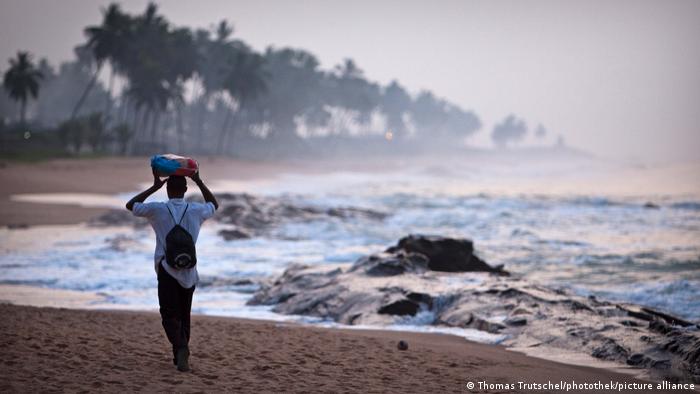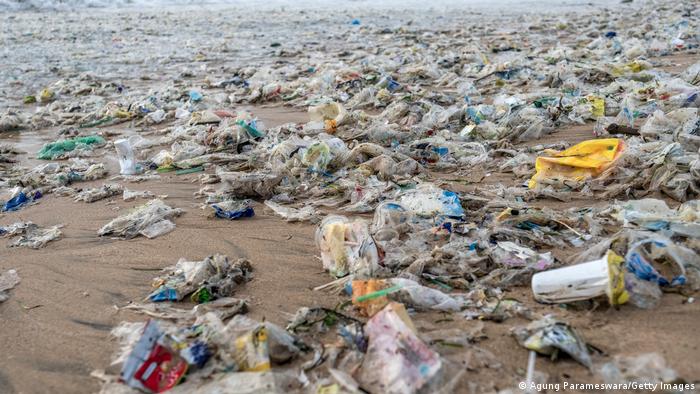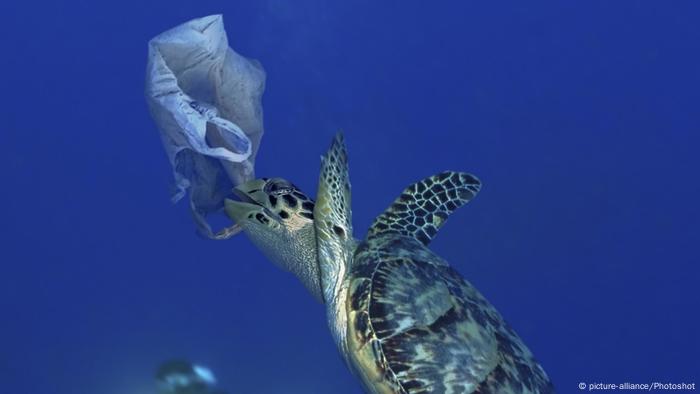They're too warm, too acidic, full of plastic and other junk – and marine life is under threat. How can we adequately protect the world's oceans? The UN Ocean Conference in Portugal seeks answers.

The ocean affects, directly or indirectly, the lives of all people – but our seas are doing badly
Humanity has severely damaged the planet's oceans, the rise in temperature, increasing acidification  ;and amounts of plastic waste threaten the animals and plants in the sea, and dangerous fishing methods threaten many species of fish.
The good news: If we take the right measures now, at least the situation could get worse be stopped.
Policymakers are meeting in Portugal this week to push ahead with ocean protection. Because our seas are not only the most important source of protein for billions of people and the basis for the income of millions of people through tourism and fishing. They are also an important line of defense in the fight against climate change.

Many people depend on healthy seas – without them no food and no income
“We're running out of time, but we can still turn the tide and invest in healthy oceans,” says Kristian Teleki, ocean expert at the nonprofit environmental organization World Resources Institute.
Protecting the ocean by limiting climate change
h2>
One of the most effective ways to protect the oceans is to stop the planet warming.
Oceans absorb a good quarter of all carbon dioxide emissions and store around 90 percent of the warming they cause. If the rise in temperature is stopped at 1.5 °C above the pre-industrial level, the Paris climate target of 2015, coral reefs are expected to decline by “only” 70 to 90 percent. On the other hand, if the world continues to heat up, to two degrees Celsius or more, all corals will die.
But despite a number of promises to reduce emissions since the 2015 climate agreement, the measures taken so far are not enough and the world is racing towards significantly higher temperatures.
Watch the video 05:43
Can coral reefs be saved?
To deliver on their promises, policy makers would need to implement a rapid conversion to clean energy sources, reduce excessive energy consumption and preserve natural ecosystems such as rainforests. They also urgently need to shut down coal-fired power plants and stop developing new oil and gas fields.
But even if CO2 emissions were stopped immediately, the oceans would initially continue to heat up before the trend reversed. It takes a very long time for the seas to recover, so the conditions for most animals and ecosystems will initially continue to deteriorate, says Toste Tanhua, oceanographer at the Geomar Helmholtz Center for Ocean Research Kiel. The scientific institute is committed to better systems for maritime surveillance.
“We hope that the young whale cubs will find a better ocean when they grow old. But we can only hope so for now.”
We must protect the oceans from humans
< p>In the short term, measures to protect the oceans from human encroachment can help marine life and the climate recover.
Marine ecosystems are under threat from unsustainable fishing and dangerous practices such as bottom trawling. The seabed is fished with huge metal-coated nets that destroy wildlife and release more carbon dioxide than the entire aviation industry.

Bottom trawls that are dragged along the seabed cause great damage
“Fish stocks are depleted, coral reefs are dying and iconic large species like whales have been pushed to the brink of extinction – the damage is immense,” said Minna Epps, director of the oceans division at the International Union for Conservation of Nature (IUCN).
The United Nations (UN) and conservation organizations are urging world leaders to protect 30 percent of the oceans by 2030. Today, only 7 percent of the oceans are designated as marine protected areas, and only 2 percent are fully or heavily protected. Yet, true strategic protection of large swathes of the ocean could allow marine wildlife to recover, keep the seas storing carbon and provide enough food for humans, a study published last year in the journal Nature showed.
But the policy also encounters resistance from those most affected by environmental degradation.
Indigenous groups complain that they have been neglected in policy proposals to protect biodiversity despite scientific evidence that they are effective stewards of nature. For example, a study published in the journal Environmental Science and Policy in 2019 showed that in Australia, Brazil and Canada, land managed by indigenous peoples has greater biodiversity than state-protected wildlife sanctuaries.

Ecuador has expanded the marine reserve around the Galápagos Islands by 60,000 square kilometers – it is now the second largest in the world.
If marine protection regulations prevent them from fishing, coastal indigenous communities could lose food and livelihoods. However, in areas where industrial fishing is banned, they could benefit from healthier waters and larger fish populations.
“I don't think we should say that every marine reserve needs to be fully protected,” Tanhua says, pointing to existing national parks that still allow some level of human use. “We can treat the ocean the same way and establish different levels of protection in different areas for different purposes.”
Stopping ocean pollution at the source
A third solution is to stop pollution before it reaches the oceans. If plastic waste is simply disposed of in nature, it often ends up in the ocean via rivers and rain. Once there, it's almost impossible to get the plastic out.
In addition, plastic also damages ecosystems as it decomposes. A study published in February by the nature conservation organization World Wide Fund for Nature (WWF) showed that the amount of microplastics in the oceans would double even if no more plastic entered the sea from now on.

Only a fraction of the plastic waste washes up on the beaches, like here in Indonesia – about 270 million tons of plastic float on the oceans
Better sorting and storage of waste could prevent plastic from continuing to enter the oceans. That would mean trash would have to be sent to safe landfills or incinerators. However, burning plastic also produces greenhouse gas emissions.
Instead, environmental groups are urging policymakers to build better recycling facilities and enact laws that encourage businesses and consumers to use significantly less plastic at large.
Increased consumer awareness of the threat posed to the oceans by plastic has led politicians to take the problem more seriously. Many countries have now banned or taxed single-use plastic bags. Last year the EU banned the production of 10 different single-use plastic items, including straws and cutlery. Yet plastic pollution in the oceans is expected to double by 2030.

To sea turtles, plastic bags look like jellyfish – their favorite food, many animals die in agony from plastic waste in their stomachs
But measures to protect the oceans from further threats such as climate change and overfishing have so far received little public support, says Judith Hauck, Deputy Head of the Marine Biogeosciences department at the Alfred Wegener Institute in Germany.
People are not aware of how important the oceans are to their own lives, says Hauck. “It's hard for us to relate to the ocean. Even when we're on the beach, we're only on the edge of the sea.”
The post was adapted from English.